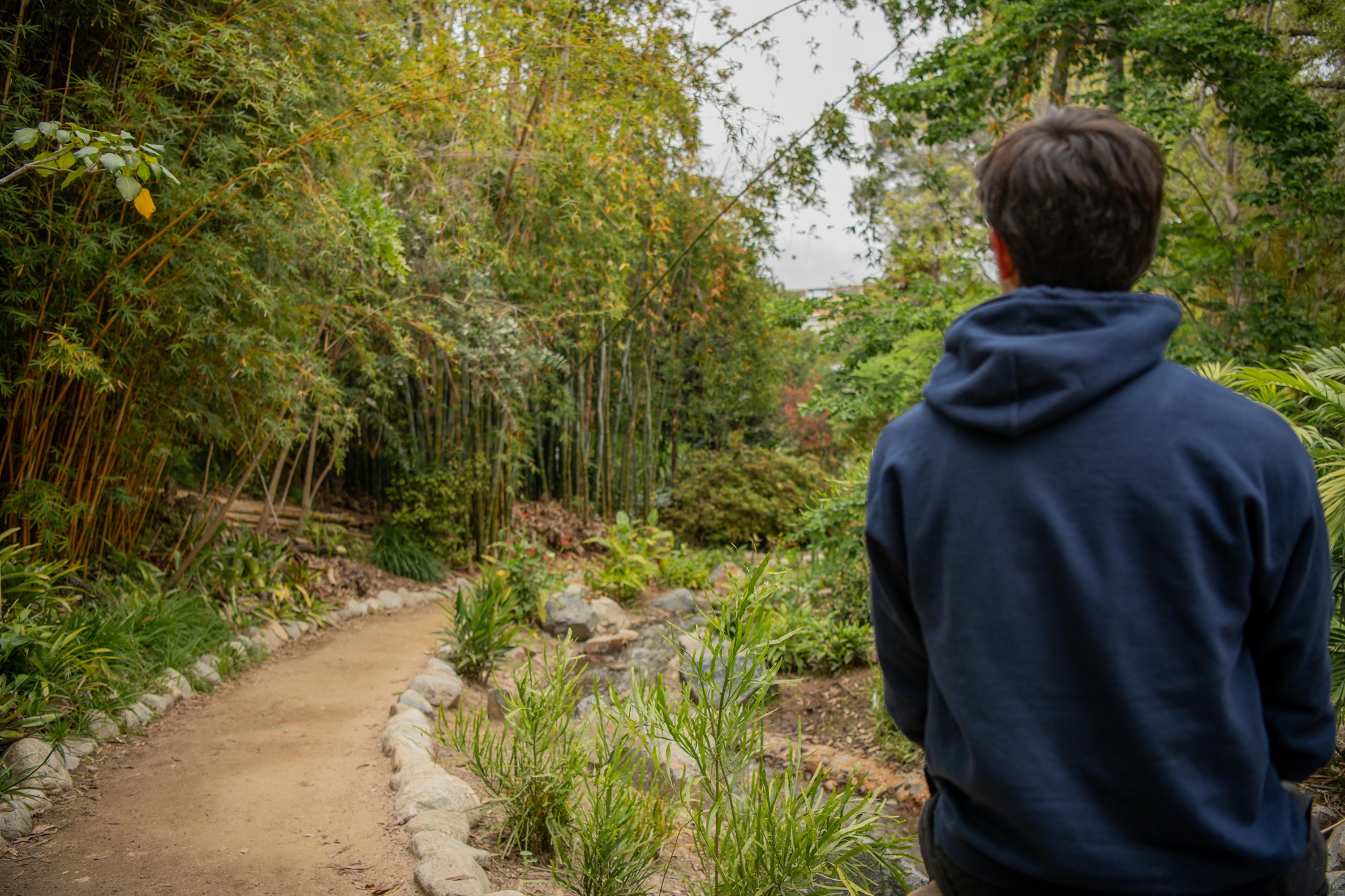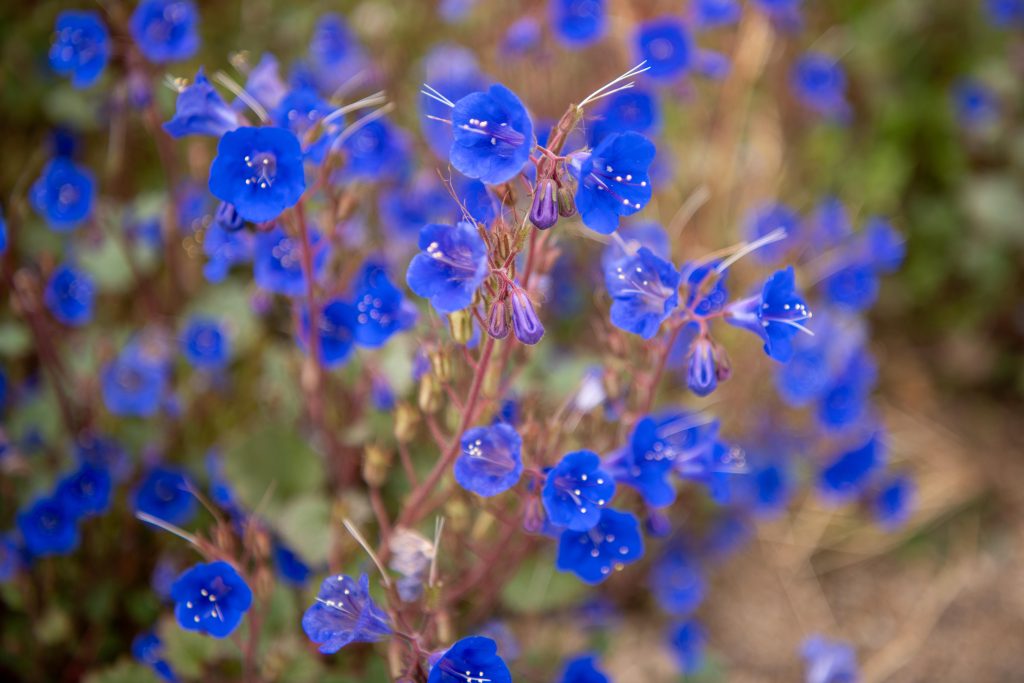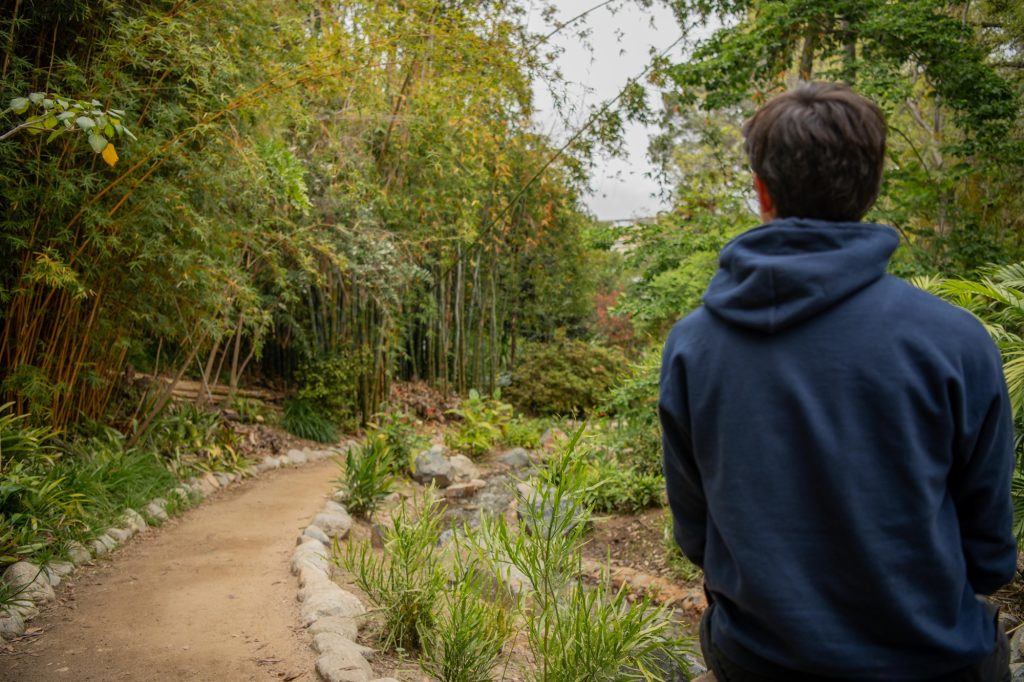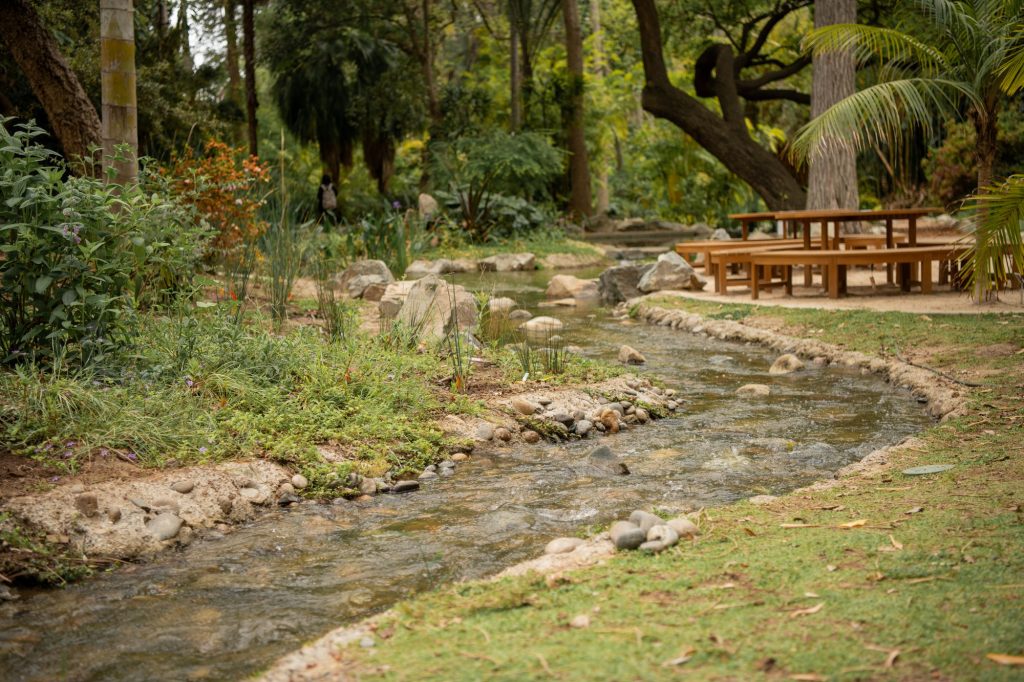Acting as my own tour guide, I traversed from plaque to plaque around the Mathias Botanical Garden in order to answer my question. As I walked, I noticed plants from different regions all over the world. There was parlor oak from Madagascar, a pink trumpet tree from the Caribbean, “All Hallows Green” from the Mediterranean, rock tree fuchsia from South Africa and of course many more. I wondered how they were all living happily here in Los Angeles.
My first plaque revealed to me the sheer variety of plants in the garden. There were 1,600 plant species and 4,000 individual plants, which seemed like too many, but I wasn’t going to count. Instead, I trekked on in search of the secret to how they lived in harmony with each other in such a tight space.
I first learned about the California native plants, which are a diverse group by themselves. Some, like the California poppy, die in the summer and are revived by winter rains. Others, like the Canyon oak, have tougher leaves, are able to withstand the dry summers and stay green all year. It made sense for these plants to be able to grow here, as they are built for the California climate. However, with how big the state is and so many different ecosystems and biomes, could so many plants really be featured in one place?
Next, I walked up a steep, sandy hill to find the desert collection. These plants can survive harsh conditions, thrive in heat and need little water. Aloe species grow in bunches to limit sun exposure, while cacti use their spines to reduce water loss through transpiration — a water-release mechanism not all too different from sweating. It was no wonder the garden was able to display these plants with little issue. To be fair though, desert plants are very hard to kill, as proven by my roommate’s desk cactus. So how do other, less resilient plants, survive in the garden?
Walking down the hill, back into the shade, I found my first key discovery: the Mediterranean Ecosystem Collection. I learned that California experiences a Mediterranean-like climate, shared by only four other regions on Earth. This is how plants from the Mediterranean, South Africa, Australia and central Chile are able to grow here. They all share the same, unique climate characterized by cool, wet winters and warm, dry summers. Further, these regions account for 2.25% of the Earth’s land surface, but 16% of the plant species. That’s why there’s room for so much biodiversity.
Another piece of the puzzle fell into place when I stumbled upon a climate-adapted garden. These plants have adapted to survive with the amount of heat and water in the local climate. (As an out-of-state student, I relate.) They have attributes that make them water-efficient, like fine hairs or modified stems, as well as fun names like “Hawaii Sunrise” and “Cousin It.”
Happy with my progress so far, I still wondered how the garden could replicate different habitats in California. There is no shortage of landscape diversity in this giant state, from the desert in the south to the forested mountains in the north. The final piece fell into place when I came across “The Stream.” The plaque said the garden was a natural arroyo—don’t worry, I had to look that one up too. Apparently, it’s a steep-sided gully formed by fast-flowing water. Over time, the stream transformed the landscape of the garden, creating diverse topography for different plants. By recirculating rainwater via an underground storm drain, the stream is also able to make some areas cooler or more humid than others. Essentially, the stream creates a cool microclimate for plants in addition to a water source for birds and koi.
And with that discovery, my work was done. I exited the garden, having learned how unique our local climate was, how it hosted a good portion of the world’s plant species, how resilient plants are able to grow here and how landscaping projects like “The Stream” can create microbiomes for different plants and even koi to thrive. I highly recommend walking through the ever-changing garden and experiencing its biodiversity for yourself as it is littered with beautiful plants, secret trails and hidden spots to sit and rest.
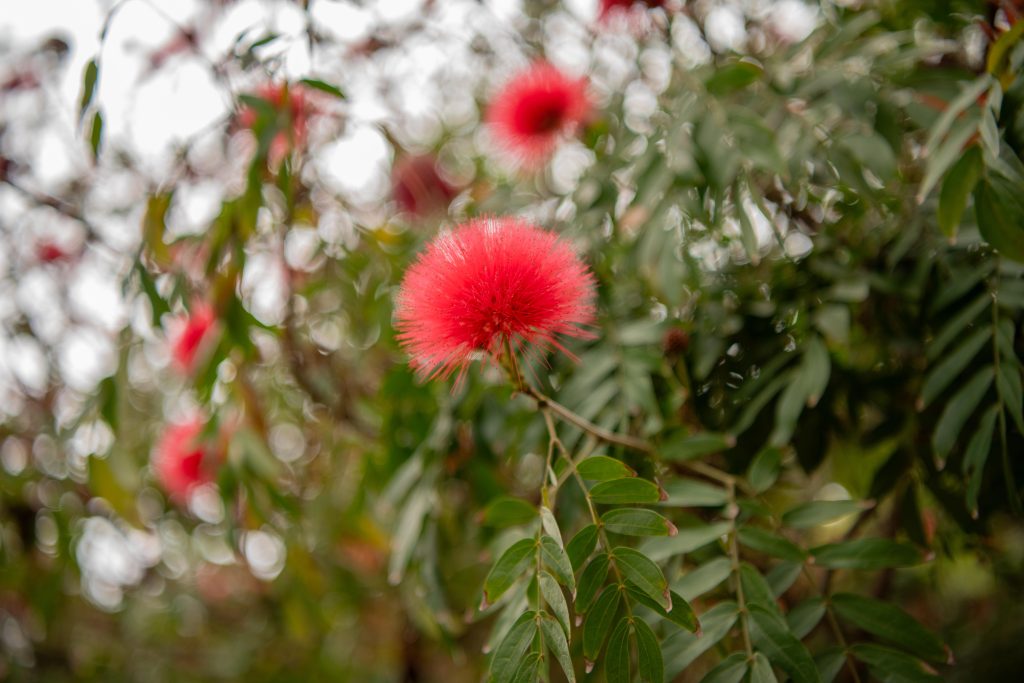
Walk down the hill and step into the Mediterranean Collection, where global blooms thrive in California’s rare climate. Photographed by Mira Daya/Bruinlife

Climb over the steep hill to find the entrance of the desert collection, where an abundance of cacti stands below the sun. Photographed by Mira Daya/Bruinlife

